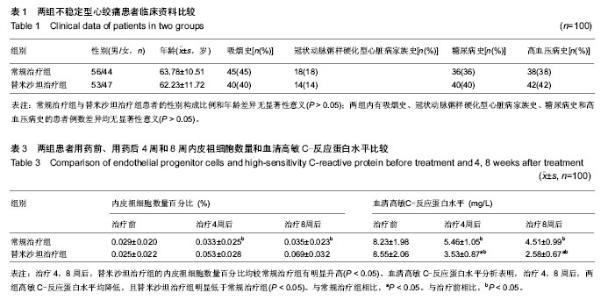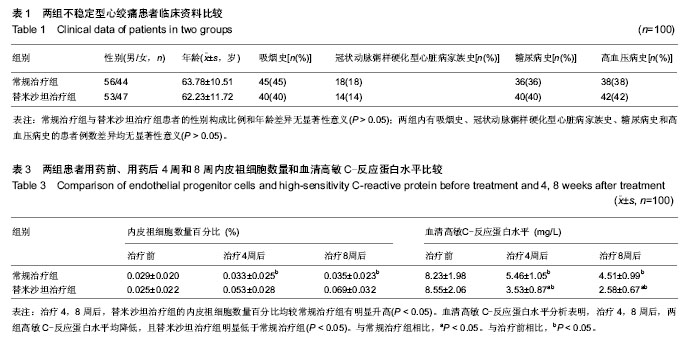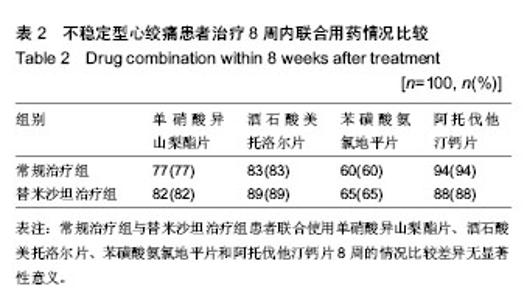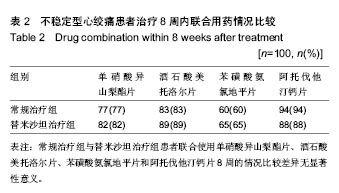| [1] 李雪艳,吴新华.炎症在急性冠脉综合征中的作用及意义研究[J].实用心脑肺血管病杂志,2012,20(5):927-928.
[2] 熊军,陈铭,柳文菊,等.冠状动脉粥样硬化型心脏病患者检测高敏C-反应蛋白的意义[J].国际检验医学杂志,2011,32(4):483-484.
[3] Luo P, Li L, Wang LX, et al. Effects of atorvastatin in combination with ezetimibe on carotid atherosclerosis in elderly patients with hypercholesterolemia. Genet Mol Res. 2014;13(2):2377-2384.
[4] Ridker PM, Burntng JE, Shih J, et al. Prospective study of C reactive protein and the risk of future cardiovascular events among apparently healthy women. Circulation. 1998;98(8): 731-736.
[5] Tataru MC, Heinrich J, Jun ker R, et al. C-reactive protein and the severity of atherosclerosis in myocardial infarction patients with stable angina pectoris. Eur Heart J. 2000;21(12): 1000-1008.
[6] 白小涓.内皮祖细胞在动脉粥样硬化易损斑块中的作用[J].中国动脉硬化杂志,2011,19(7):543-546.
[7] Kawamoto A, Gwon HC, Lwaguro H, et al. Therapeutic potential of ex vivo expanded endothelial progenitor cells for myocardial ischemia. Circulation. 2001;103(5):634-637.
[8] 郭长磊,李红军.内皮祖细胞与冠状动脉病变严重程度的分析[J].中国现代药物应用,2010,4(20):53-54.
[9] 林泽鹏,金光临,张志伟.替米沙坦对老年高血压不稳定型心绞痛患者脂联素及C-反应蛋白的影响[J].中华老年医学杂志, 2005, 24(8):631-633.
[10] 郭完计,李晶,郭倩云,等.替米沙坦对不稳定型心绞痛患者血清hs-CRP、MMP-9和AngⅡ水平的影响[J].中国循证心血管医学杂志,2012,4(1):20-22.
[11] 马晶晶,章涛.PPARγ功能与疾病关系研究进展[J].中国药理学通报,2012,28(5):601-604.
[12] 王静,徐萍,侯彦强,等.PPARγ激动剂对单核细胞炎症反应的调控作用[J].上海交通大学学报(医学版),2012,32(7):861-865.
[13] 郭倩云,郭完计,李晶,等.替米沙坦对老年不稳定型心绞痛患者血清hs-CRP、MMP-9和AngⅡ水平的影响[J].中西医结合心脑血管病杂志,2012,10(7):775-777.
[14] 杨大春,马双陶,唐兵,等.替米沙坦对高血压伴不稳定型心绞痛患者单核细胞中PPARs表达的影响[J].中国药理学通报, 2010, 26(7): 882-885.
[15] 郑虹,米树华,杨红霞,等.替米沙坦对老年原发性高血压伴代谢综合征血尿酸和超敏C-反应蛋白的影响[J].心肺血管病杂志, 2011, 30(2):107-109.
[16] 董西刚,孙林,张戈.易损斑块的血清标记物研究进展[J].中国动脉硬化杂志,2012,20(6):568-572.
[17] Michiels C. Endothelial cell functions. J Cell Physio. 2003; 196(3):430-443.
[18] Ferns GA, Avades TY. The mechanisms of coronary restenosis: insights from esperimental medels. Iint J Exp Pathol. 2000;81(2):63-88.
[19] 印章.替米沙坦对不稳定型心绞痛患者内皮祖细胞和高敏C-反应蛋白的作用[J].临床荟萃,2013,28(8):858-860.
[20] 杨军,张桂芳.血管紧张素Ⅱ受体拮抗剂特征及应用进展[J].中国当代医药,2011,18(23):22-23.
[21] Siragusa M, Sessa WC. Telmisartan exerts pleiotropic effects in endothelial cells and promotes endothelial cell quiescence and survival. Arterioscler Thromb Vasc Biol. 2013;33(8): 1852-1860.
[22] 曹政,杨勇,吴瑞霞,等.替米沙坦通过磷脂酰肌醇-3-激酶/丝苏氨酸蛋白激酶途径改善内皮祖细胞的功能活性[J].中国动脉硬化杂志,2012,20(12):1083-1087.
[23] Walter DH, Rittig K, Bahlmann FH, et al. Statin therapy accelerates reendothelialization:a novel effect involving mobilization and incorporation of bone marrow derived endothelial progenitor cells. Circulation. 2002;105(25): 3017-3024.
[24] Yang N. Apolipoprotein A-I mimetic peptidereverse D-4F improves the biological functions of mouse bone marrow derived late EPCs via PI3K/AKT/eNOS pathway. Mol Cell Biol Chem. 2013;377(1-2):229-236.
[25] Mills NL, Tura O, Padfield GJ, et al. Dissociation of phenotypic and functional endothelial progenitor cells in patients undergoing percutaneous coronary intervention. Heart. 2009;95(14):2003-2008.
[26] Klinghammer L, Urschel K, Cichal I, et al. Impact of telmisartan on the inflammatory state in patients with coronary atherosclerosis-Influence on IP-10, TNF-α and MCP-1. Cytokine. 2013;62(2):290-296.
[27] 于海波,韩雅玲,王祖禄,等.替米沙坦降压疗效的临床研究[J].高血压杂志,2004,12(6):515-518.
[28] 李萍,田毅.急性冠状动脉综合征患者治疗前后血浆炎症因子水平的变化及意义[J].中国药物与临床,2012,12(9):1176-1177.
[29] 刘继烈.瑞舒伐他汀对不稳定型心绞痛患者C-反应蛋白的影响[J].实用心脑肺血管病杂志,2012,20(5):774-775.
[30] 贺芬芬,李哈妮,孙芳玲,等.药物稳定动脉粥样硬化易损斑块的研究进展[J].中国康复理论与实践,2012,18(10):934-938. |



